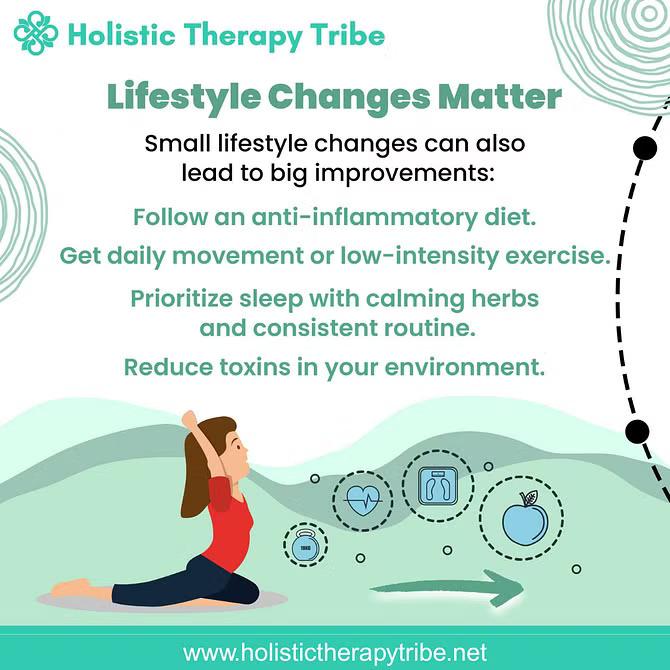For athletes, health is everything. Whether you’re a runner, cyclist, or weekend warrior, your body is your most vital tool. That’s why Lyme disease—a tick-borne illness that can cause serious, long-lasting symptoms can be especially devastating. Lyme disease in athletes often goes undetected in the early stages, and its chronic effects can dramatically impair physical performance, endurance, and mental focus.
This blog explores how Lyme disease affects athletes, common symptoms, and how a holistic approach can support recovery and long-term health.
Understanding Lyme Disease in Athletes
Lyme disease is caused by the bacterium Borrelia burgdorferi, transmitted through the bite of infected black-legged ticks (commonly called deer ticks). Outdoor athletes—such as hikers, trail runners, mountain bikers, and soccer players—are at a higher risk due to their frequent exposure to grassy and wooded areas.
Many athletes mistake early Lyme symptoms like fatigue, joint pain, or brain fog for overtraining or dehydration. Unfortunately, if left untreated, Lyme disease can progress and result in chronic issues that affect muscles, joints, and neurological function.
Common Symptoms for Athletes with Lyme Disease
Athletes may experience Lyme disease differently. Here are symptoms to watch for:
- Persistent fatigue not improved by rest
- Joint and muscle pain, often shifting in location
- Brain fog, memory problems, and difficulty concentrating
- Shortness of breath or heart palpitations
- Sleep disturbances
- Sensitivity to light and sound
- Mood changes, including depression or irritability
These symptoms can interfere with training, recovery, and even daily life, making early detection and treatment critical.
Diagnosis Challenges for Active Individuals
Athletes often push through discomfort. This mindset, while admirable in sports, can delay diagnosis. A bullseye rash (erythema migrans) is a telltale sign, but it doesn't appear in all cases. Blood tests may miss early infections, and standard diagnostics are not always accurate.
If you’re an athlete with unexplained fatigue or recurring pain especially after outdoor exposure consult a Lyme-literate doctor for specialized testing.
Impact on Athletic Performance
Lyme disease can derail athletic performance. Muscle weakness, slower reaction times, and reduced stamina are common, even in fit individuals. Neuroinflammation may affect coordination and balance, while mental fog can impair focus during practice or competition.
Athletes often feel frustration at the sudden loss of performance. Recovery takes time, patience, and a comprehensive support system.
Holistic Support for Lyme Disease Recovery in Athletes
A holistic recovery plan blends medical treatment with integrative therapies to rebuild strength and wellness. Key components include:
1. Targeted Medical Treatment
Antibiotic therapy is usually the first step. In chronic cases, a specialist may recommend additional antimicrobial or immune-boosting therapies.
2. Nutritional Therapy
A clean, anti-inflammatory diet rich in antioxidants can help reduce inflammation and support recovery. Include foods like leafy greens, berries, turmeric, and omega-3s.
3. Gentle Movement and Recovery
While high-intensity workouts may worsen symptoms, light exercise like yoga, walking, or swimming can help maintain mobility without overtaxing the body.
4. Detoxification Support
Athletes with Lyme may benefit from therapies that help eliminate toxins such as infrared sauna, dry brushing, or lymphatic drainage massage.
5. Mind-Body Therapies
Meditation, breathwork, and mindfulness can ease stress, support immune function, and improve sleep quality critical for healing.
6. Supplement Support
Under a practitioner's guidance, supplements like magnesium, CoQ10, B-complex, and probiotics may help reduce symptoms and improve energy levels.
Returning to Sports: What to Expect
Recovery is not linear. Some athletes regain full strength in months; others take years. Listen to your body, celebrate small wins, and avoid pushing too hard too soon. Work closely with a Lyme-aware healthcare provider to guide your return to training.
Prevention Tips for Athletes
- Wear long sleeves and pants in tick-prone areas
- Use insect repellent with DEET or permethrin-treated gear
- Check your body (and gear) for ticks after every outing
- Shower soon after outdoor activities
- Keep grass trimmed and avoid overgrown areas
Early prevention and prompt tick removal can significantly reduce your risk.
Final Thought
Lyme disease in athletes is serious but with awareness, early action, and holistic support, recovery is possible. Your strength as an athlete doesn’t vanish with illness, it transforms. Trust your body, seek the right help, and rebuild at your pace.
